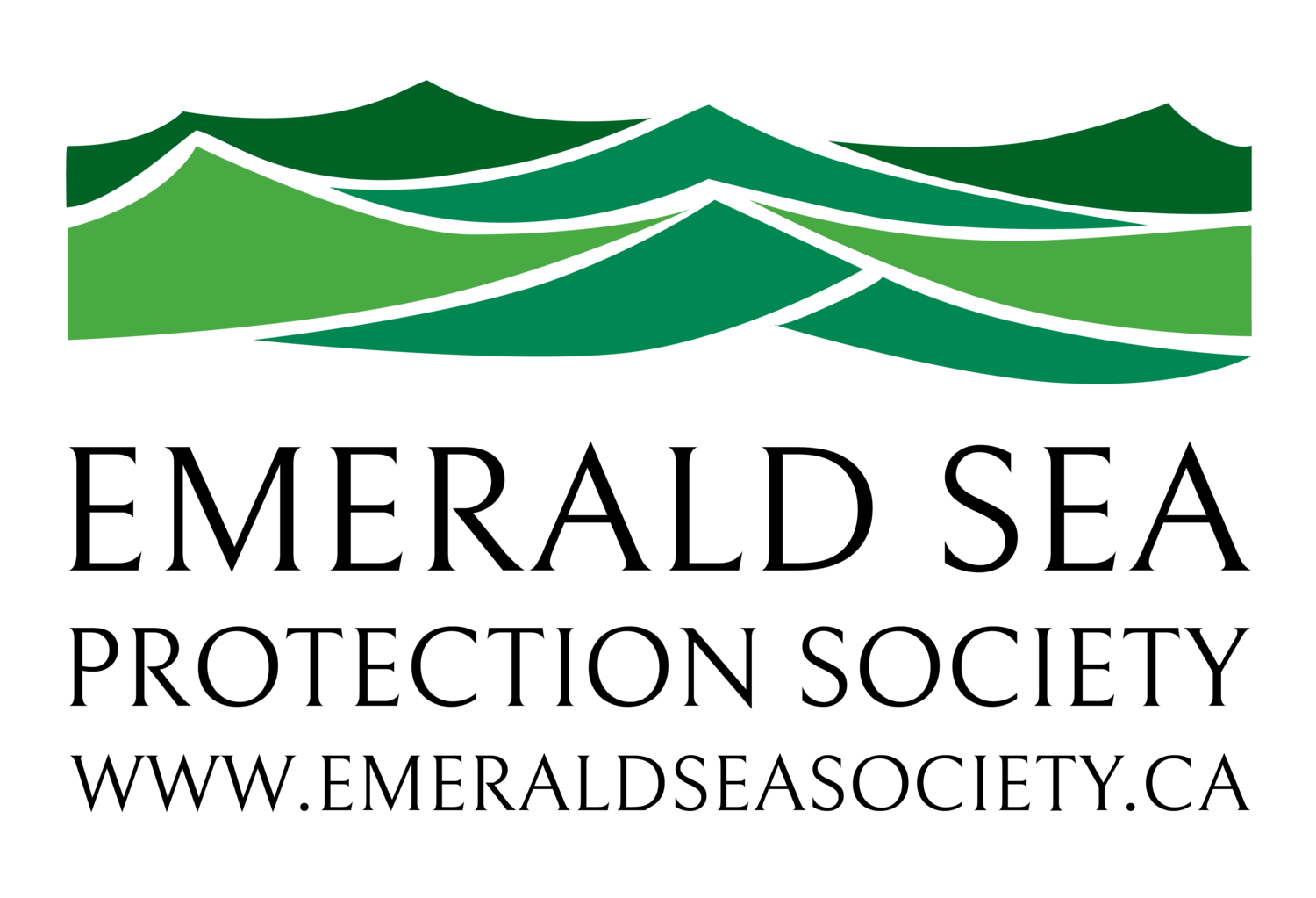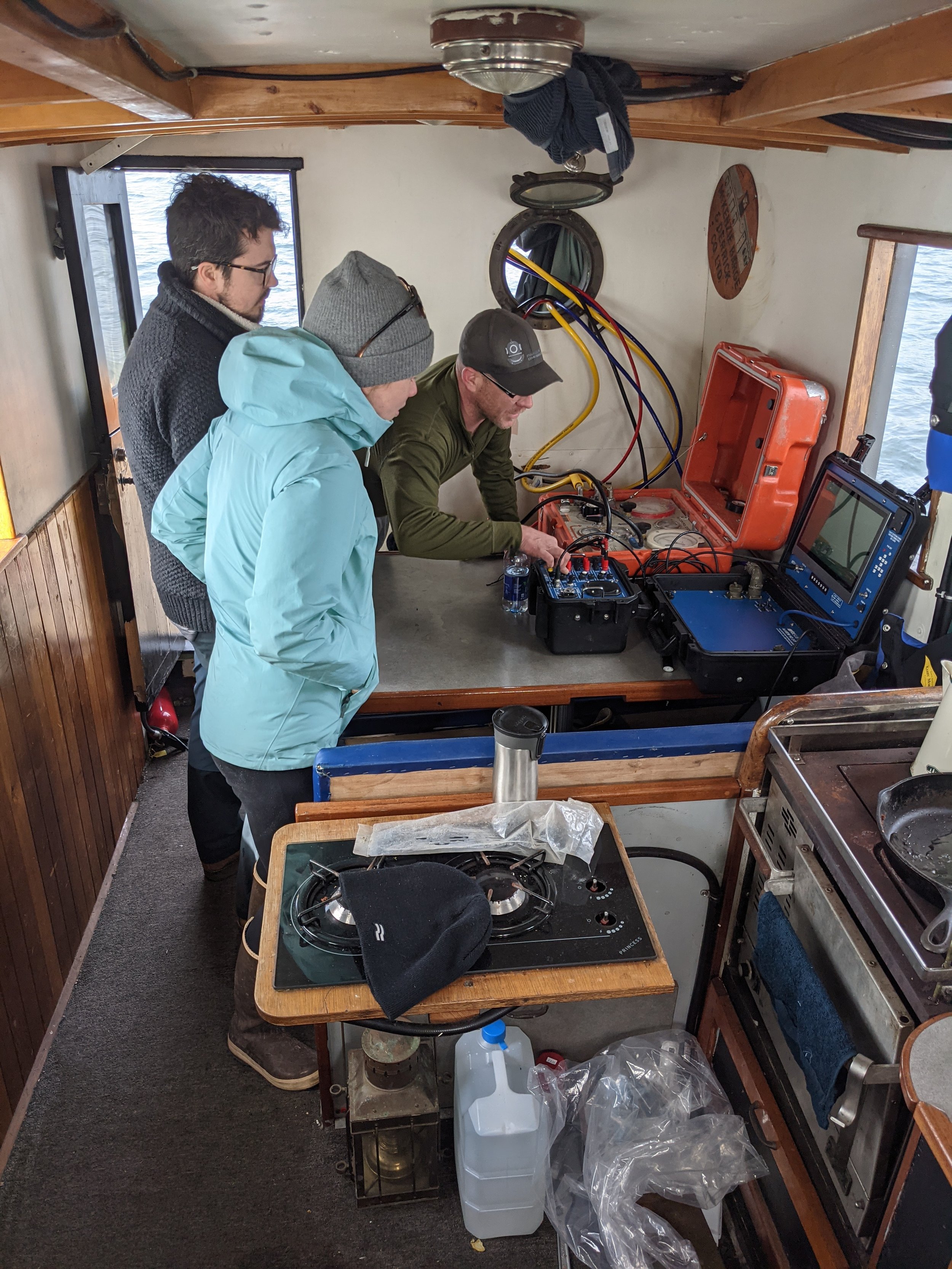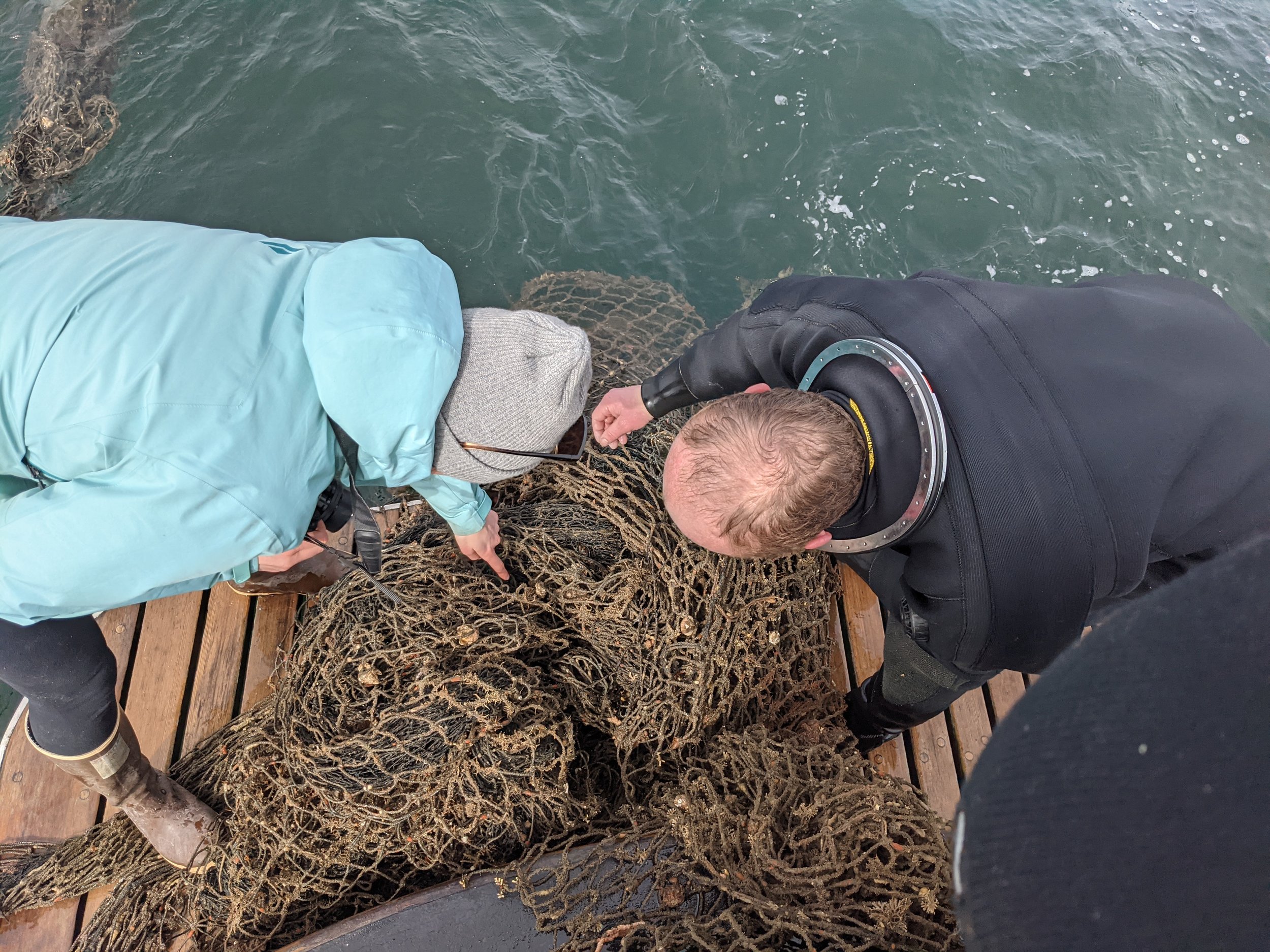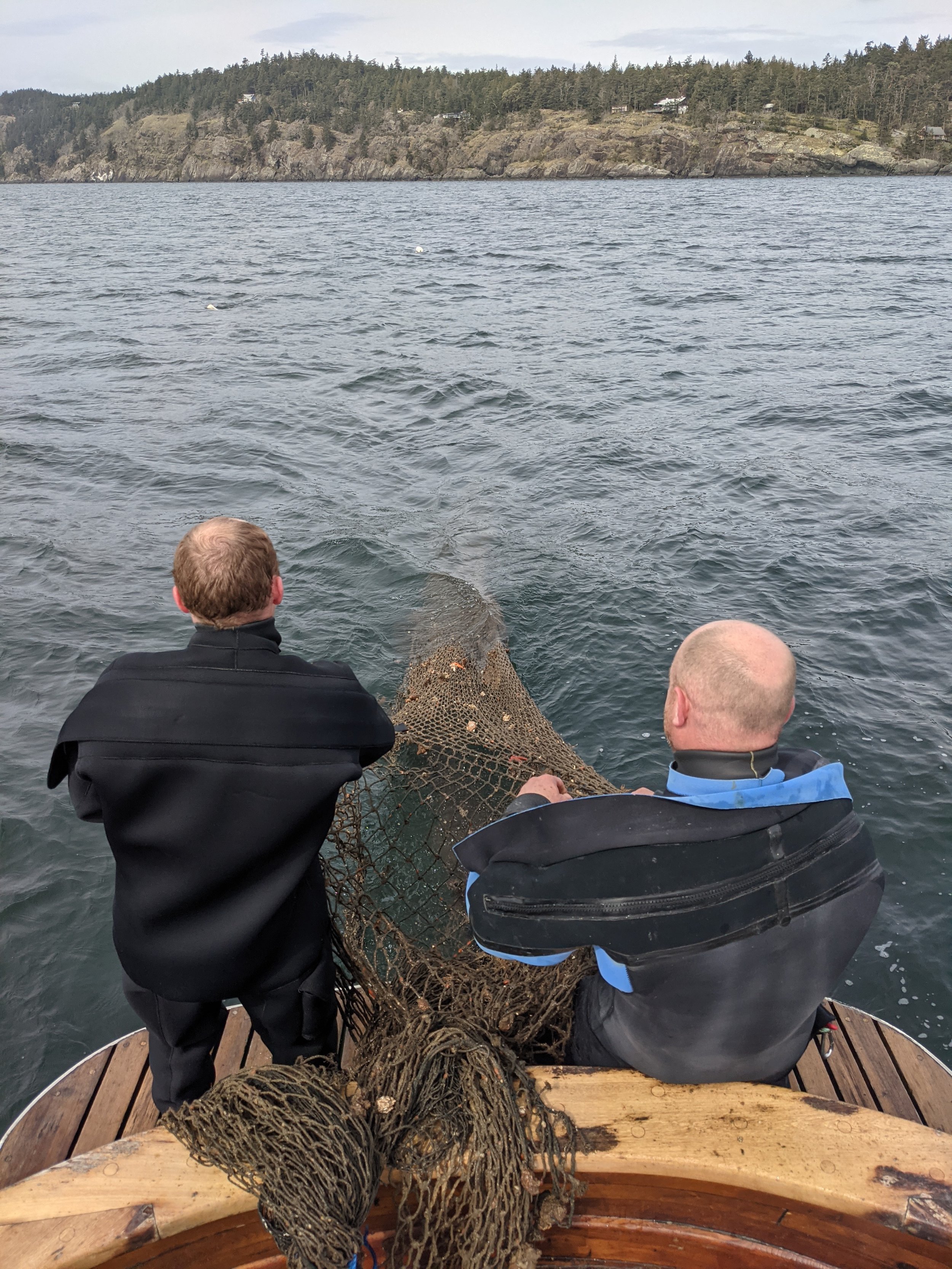In 2020 we returned to the Southern Gulf Islands to search for some of the last remaining pieces of seine net from a multi-year project near Pender Island. After multiple trips out to the location and many helping hands, we were able to recover some of the last pieces of net left onsite.
In the 1970’s, a large salmon seine net was discovered by recreational divers just south of Pender Island. The net, approximately 25,000 square metres in size, was draped over an ocean pinnacle at an average depth of 80 feet. Over the past decade, several collaborative projects have been carried out to recover the net and restore the spire back to its natural condition. Emerald Sea participated in one of these collaborative projects in 2016 alongside several organizations including the Global Ghost Gear Initiative, World Animal Protection, Northwest Straits Foundation, and Steveston Harbour Authority where we helped recover about 75% of the net. In 2018, we returned to the site and worked with the crew of Providence, a 100-year-old fishing vessel, to retrieve another 10-15% of the material (see previous blog post here and here to read more about past trips to Pender!).
The site has been deep and challenging to work on, but we were excited to return most recently for a third time to continue clearing the site of lost fishing gear.
The net, which had been caught underwater for over 50 years, was carefully inspected once brought up to the surface to ensure removal of any marine life. Some of the species we found included Pacific blood stars, tunicates, corals, sponges, and bivalves that had all made a home of the net over the many years it had been there. The marine life was carefully disentangled and released back into the ocean.
After five years of working on this site, we asked Emerald Sea Founder, Bourton, to reflect on the project so far:
Pender has definitely been a project that has shaped and defined our initial work. Being one of our first recovery sites and our most frequently visited over the years it has taught us many lessons. The seine net on Pender is located in an area that is not only deep but has very strong currents which posed challenges to our group at the beginning due to the lack of specialized equipment to do the work safely and efficiently. After the support from DFO came through we were able to go back and recover the remainder of the net that was at diveable depths.
What were some of the biggest challenges of this site?
Pender Island is high up on the list for the most challenging sites we’ve worked on. The ocean spire reaches up from the seabed with the shallowest point at approximately 80’ which makes the site quite deep to work on. Not only this but the water around the spire ranges from 200’ to 500’, combined with its location in the gulf islands the currents are unpredictable and very strong. Planning dives around favourable tides is crucial to a successful project in an area like this. Once a diver gets into the water they contend with low visibility and high entanglement when the net starts coming off the reef. These hazards are compounded by current and weather conditions on the surface so to ensure everyone’s safe during a recovery all of these aspects of the job have to be assessed on an ongoing basis with work being postponed if conditions get too dangerous.
Thanks to all those that were involved over the years with helping clean up this site! This multi-year project has taught us lots over the years and has given us great tools to continue working on projects in the future.







